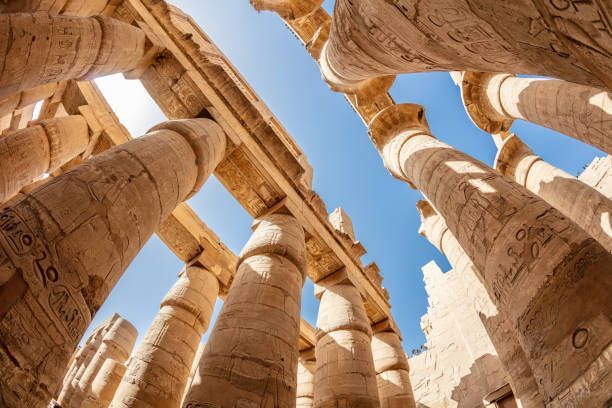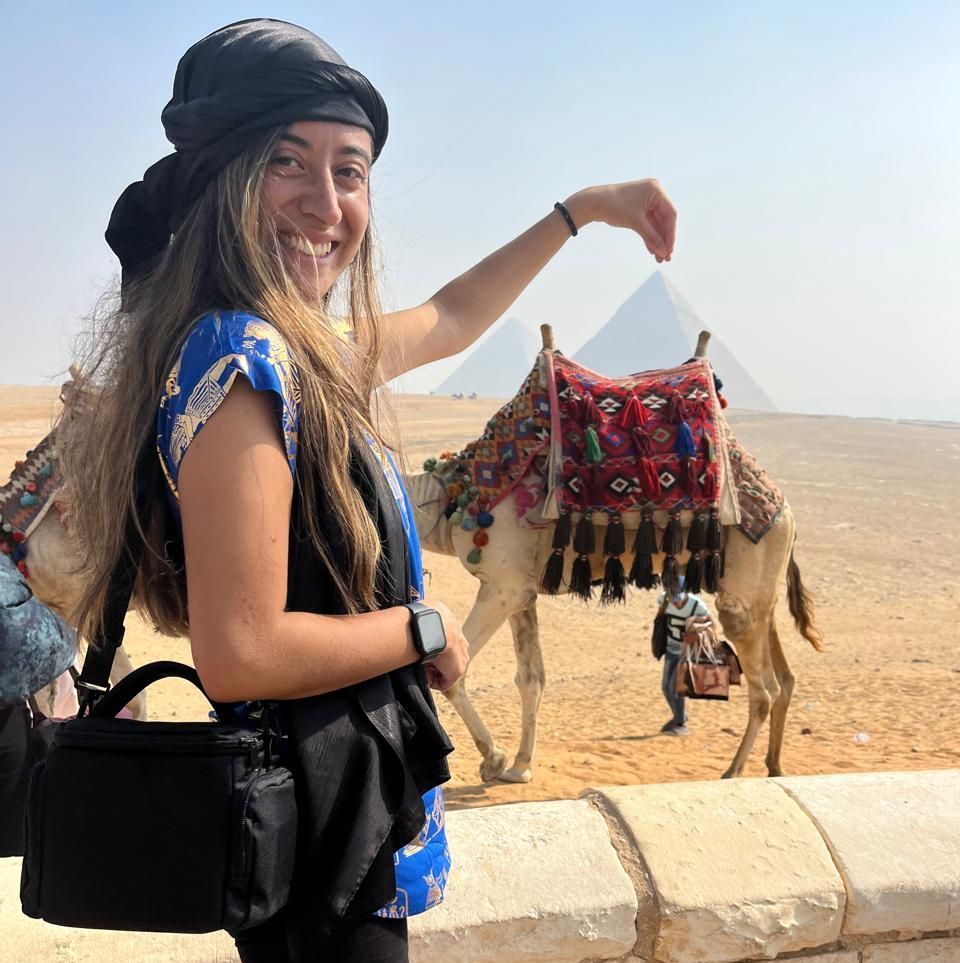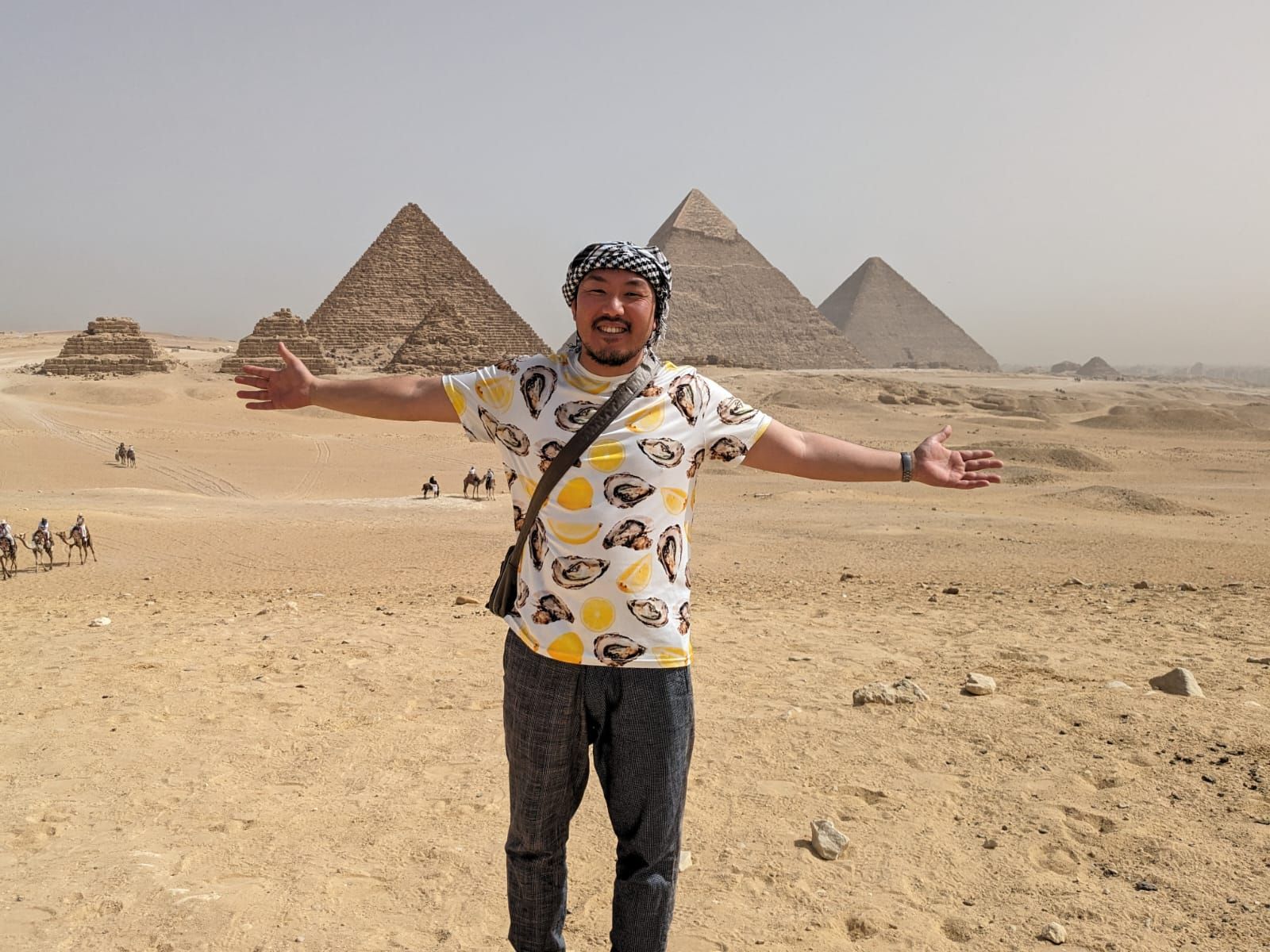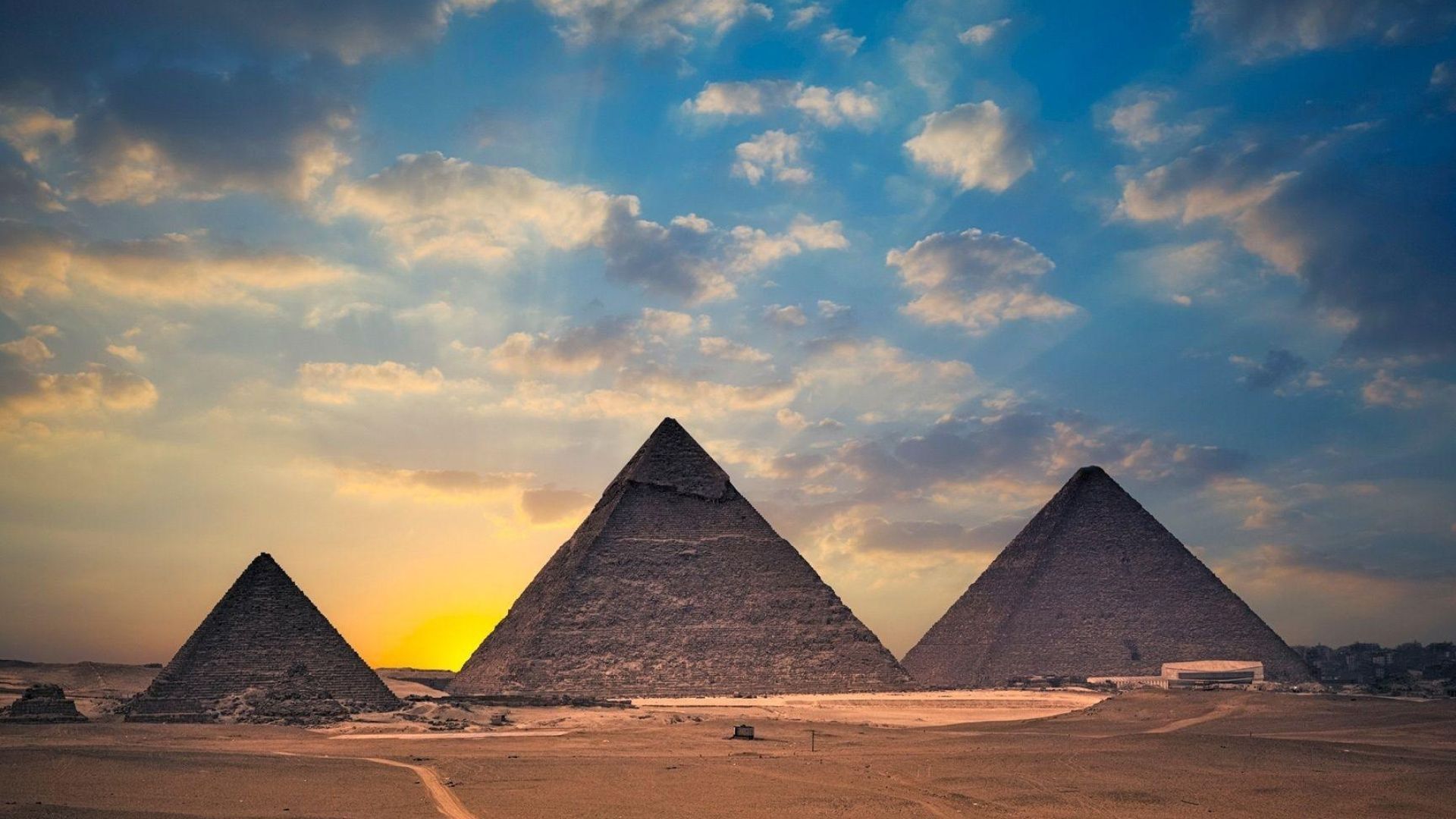Things To Do In Luxor And Aswan

Embarking on a Nile Cruise: A Journey Through Ancient Egyptian Wonders
Embarking on a Nile Cruise offers a unique vantage point to explore the rich tapestry of Ancient Egyptian history. This journey weaves through timeless landscapes and monumental relics, from the majestic Pyramids of Giza to the enigmatic temples of Luxor and Aswan. Travelers are transported back to the era of pharaohs, discovering the myths, architecture, and hieroglyphs that have captivated humanity for millennia. A Nile Cruise is not just a trip but an immersive passage into the heart of ancient civilization.
The Nile River has captivated the human imagination for millennia. As the longest river in the world, it snakes through the heart of Egypt, offering a vantage point on the country's ancient wonders that is as unique as it is enchanting. A Nile cruise is more than just a journey; it's a passage through time, where each bend in the river reveals another chapter in the rich tapestry of Egyptian history. The allure lies in the serene waters, the lush riverbanks, and the monuments that have stood sentinel over this landscape for thousands of years.
Travelers are drawn to the Nile's tranquil waters, which have been the lifeblood of Egypt since antiquity. The river's significance to the development of Egyptian civilization cannot be overstated—it has been a source of sustenance, a means of transport, and a setting for religious and cultural rituals. Today, the Nile continues to be a source of inspiration and wonder, offering a serene backdrop to the hustle and bustle of modern Egyptian cities.
Overview of the Cruise Journey
Embarking on a Nile cruise is to step aboard a floating piece of history. The journey typically unfolds between the cities of Luxor and Aswan, two of the most significant archaeological locales in Egypt. The cruise offers a leisurely pace, allowing travelers to absorb the sights and sounds of the Nile Valley. The days are often structured around visits to ancient temples, tombs, and other historical sites.
The cruise ships themselves are designed to provide comfort and elegance, with amenities that ensure a pleasant stay while on the river. Guests can expect to find well-appointed cabins, dining facilities that offer a taste of local cuisine, and observation decks that provide panoramic views of the passing landscape.
As the cruise moves along the Nile, guests will encounter various points of interest.
The Valley of the Kings and Queens, the
temples of Karnak and Luxor, and the Philae temple in Aswan are just a few of the highlights. Each site is a doorway to the past, where hieroglyphics, monumental statues, and architectural marvels tell the stories of pharaohs, gods, and the people who lived along the Nile.
The rhythm of the cruise is dictated by the river itself, with stops planned at key locations to give travelers the opportunity to explore on foot. Expert guides often accompany the excursions, providing context and insights into the ancient world. Between these excursions, life on the ship is a tranquil experience, with the gentle lapping of the river against the hull providing a soothing soundtrack to the journey.
A Nile cruise is not just a trip; it's an experience that stays with you long after you've returned to dry land. It's an opportunity to witness the legacy of an ancient civilization while floating on the very river that helped shape it.
Unveiling the Mysteries of Ancient Egypt
Temples and Tombs Along the Nile
The Nile River, the lifeblood of
Ancient Egypt, is flanked by an array of monumental structures that have stood the test of time. These temples and tombs are not merely stone relics; they are the storytellers of a civilization steeped in mystery and grandeur. As one embarks on a
Nile cruise, the journey through these ancient wonders begins.
The temples along the Nile were the nexus of religious and social life in Ancient Egypt. Each temple was dedicated to a specific deity and served as a home for the gods on earth. The intricate hieroglyphs and colossal statues that adorn these temples provide insight into the religious beliefs, rituals, and the pantheon of gods that Ancient Egyptians revered.
Tombs, on the other hand, were constructed to ensure the safe passage of the pharaohs and nobles into the afterlife. The elaborate burial practices, mummification processes, and the treasures buried with the deceased were all part of an elaborate system of beliefs surrounding death and rebirth. The tombs also serve as a historical archive, offering a glimpse into the lives, statuses, and accomplishments of those entombed within.
Key Historical Sites: Luxor, Aswan, and the Valley of the Kings
Luxor
Luxor stands as a testament to the opulence and power of the New Kingdom. The city, often referred to as the world's greatest open-air museum, boasts a collection of sites that are unparalleled in their historical significance. The Temple of Karnak, a vast complex of sanctuaries, pylons, and obelisks, was dedicated to the Theban triad but primarily to the god Amun-Ra. The Luxor Temple, connected to Karnak by the Avenue of Sphinxes, was a center of the important festival of Opet. These temples are filled with a wealth of inscriptions, carvings, and freestanding monuments that reveal the complexity of ancient Egyptian theology and pharaonic power.
Aswan
Further south, Aswan offers a different perspective on Ancient Egyptian civilization. The Philae Temple, now relocated to Agilkia Island due to the construction of the Aswan High Dam, was dedicated to the goddess Isis and showcases the later Ptolemaic and Roman periods. The Unfinished Obelisk, still lying in its ancient quarry, provides a unique look at the stone-working techniques of the ancients. Aswan also serves as the gateway to the Temple of Abu Simbel, the colossal rock-cut temple of Ramesses II, which stands as a symbol of the pharaoh's power and divine status.
The Valley of the Kings is the burial ground of pharaohs from the New Kingdom, including the famous Tutankhamun, whose tomb was discovered almost intact in This valley is a treasure trove of archaeological significance, with tombs cut deep into the desert rock, richly decorated with paintings and hieroglyphs. These tombs were designed to navigate the deceased through the underworld, with texts from the Book of the Dead serving as a guide. The discovery of these tombs has provided invaluable knowledge about the burial customs, artistic developments, and daily life of the period.
Each of these sites along the Nile offers a unique window into the past, allowing modern-day explorers to unravel the mysteries of Ancient Egypt. The temples and tombs not only display the architectural genius of the ancient builders but also reflect the complex society, religious beliefs, and the eternal quest for immortality that shaped this great civilization.
Accommodations and Amenities
Embarking on a Nile cruise offers travelers the chance to explore the ancient wonders of Egypt in comfort and style. The accommodations on these riverboats are designed to provide guests with a serene and luxurious environment. Rooms typically feature large windows or balconies, allowing passengers to take in the breathtaking views of the Nile and its surroundings. Cabins are often equipped with modern amenities such as air conditioning, en-suite bathrooms, comfortable bedding, and sometimes even a mini-fridge and television.
The amenities on a Nile cruise are tailored to enhance the experience of the journey. Many cruises offer a sun deck where passengers can lounge and soak up the Egyptian sun, often with a pool or jacuzzi to cool off in. Fitness centers, spas, and massage services are available on some vessels, providing a way for guests to relax after a day of sightseeing. The dining experience aboard is typically a highlight, with chefs preparing a variety of local and international dishes. Meals are often served in a panoramic dining room or on an open-air deck, allowing diners to enjoy their meal with a view.
Cultural Experiences and Onboard Entertainment
A Nile cruise is not just about the comfort of the accommodations; it is also an immersive cultural experience. Onboard entertainment often includes traditional Egyptian music and dance performances, giving passengers a taste of the local culture. Guests might enjoy belly dancing shows, whirling dervishes, or live bands playing Arabic melodies.
Lectures and educational talks are frequently part of the onboard programming. Egyptologists or expert guides may provide insights into the history of the sites passengers will visit, offering context and depth to the ancient wonders they are about to see. These talks can cover topics such as the construction of the
pyramids, the life of the pharaohs, and the significance of the Nile to
Egyptian civilization.
Interactive experiences such as cooking classes or Arabic language lessons might also be offered, allowing guests to engage with the culture in a hands-on way. These activities not only entertain but also enrich the journey, leaving passengers with new skills and a deeper understanding of Egypt.
The cultural experiences and onboard entertainment are carefully curated to complement the day's excursions and the overall theme of the cruise, ensuring that life aboard is as enriching as the ancient wonders that lie along the river's banks.
Planning Your Nile Cruise Adventure
Best Time to Embark
When considering a Nile cruise, timing is crucial to ensure the best experience. The ideal period to embark on a Nile cruise is between October and April. During these months, the weather in Egypt is cooler, making it more comfortable to explore the ancient sites and enjoy the scenic beauty of the Nile. The peak tourist season falls between December and February, offering the most pleasant climate, but also the largest crowds. If you prefer a quieter journey with fewer tourists, consider the shoulder months of October, November, March, or April.
Tips for Travelers
Embarking on a Nile cruise is an exciting adventure, but it's important to be well-prepared. Here are some tips to help you make the most of your journey:
- Visa Requirements: Check the visa requirements for your nationality well in advance. Many travelers can obtain a visa on arrival or an e-visa before departure.
- Health Precautions: Consult with a travel doctor for recommended vaccinations and health advice. It's also wise to pack a basic travel health kit.
- Currency and Payments: Have some local currency (Egyptian pounds) for small purchases, but be aware that major credit cards are widely accepted on board and at major tourist sites.
- Cultural Sensitivity: Dress modestly when visiting temples and religious sites. This is respectful and often required for entry.
- Language: While Arabic is the official language, English is commonly spoken in tourist areas. Learning a few basic Arabic phrases can enhance your interactions with locals.
- Safety: Stay aware of your surroundings and keep your belongings secure. Follow the guidance of your tour operator regarding safety protocols.
What to Pack
Packing for a Nile cruise involves preparing for a variety of activities, from sightseeing to formal dinners on the cruise ship. Here's a list of essentials:
- Clothing: Lightweight, breathable clothing for daytime; warmer layers for cooler evenings. Include a mix of casual and smart-casual attire.
- Footwear: Comfortable walking shoes for excursions and sandals or deck shoes for on the ship.
- Sun Protection: High-SPF sunscreen, a wide-brimmed hat, and sunglasses to protect against the strong sun.
- Travel Adapters: Egypt uses 220V power, so bring suitable adapters for your electronic devices.
- Camera and Binoculars: Capture the stunning landscapes and wildlife along the Nile.
- Personal Medications: Along with your prescriptions, consider remedies for common travel ailments.
- Insect Repellent: Especially important for evenings and excursions near the riverbanks.
- Reusable Water Bottle: Stay hydrated and reduce plastic waste.
- Day Pack: For carrying essentials during off-ship excursions.
By considering the best time to embark, preparing with these traveler tips, and packing appropriately, you'll be well on your way to a memorable Nile cruise adventure.
Experience the Magic of the Pharaohs with Guided Luxor Tours
Embark on a journey through time with guided Luxor tours, where the ancient world of the Pharaohs unfolds before your eyes. Explore the Valley of the Kings, marvel at the grandeur of Karnak Temple, and witness the intricate details of Queen Hatshepsut's Temple. Accompanied by expert guides, delve into the rich history and mythology of these timeless monuments, ensuring a captivating and educational experience. Luxor's treasures offer a glimpse into the past, promising an unforgettable adventure in the heart of ancient Egyptian civilization.
The Historical Significance of Luxor
Luxor, once known as Thebes, is a city of unparalleled historical significance. It served as the capital of Egypt during the New Kingdom (circa 1550–1070 BCE), a period marked by unprecedented prosperity and cultural richness. Thebes was the seat of power for pharaohs who expanded their empire, leaving behind a legacy of architectural and artistic masterpieces. The city was not only the political and military capital but also a religious center, dedicated to the worship of the god Amun.
Thebes was the stage for significant historical events, including the rise and fall of powerful pharaohs, the establishment of religious cults, and the creation of monumental structures. Its strategic location on the east bank of the Nile made it a bustling hub of trade, culture, and religion. The city's grandeur was well-documented by ancient historians, and it was revered by the Greeks and Romans who followed, earning it the title of 'the hundred-gated city' due to its grand entrances.
Overview of Luxor's Main Attractions
The Temple of Karnak is not just a single temple but a vast complex that was developed over more than a thousand years. It is the largest religious building ever constructed and is a testament to the architectural prowess of the ancient Egyptians. The complex is dominated by the Great Hypostyle Hall, a forest of giant pillars, and is home to the sacred lake, obelisks, and a series of intricate hieroglyphs that tell the stories of the gods and pharaohs.
The Luxor Temple, connected to Karnak by the Avenue of Sphinxes, is an elegant manifestation of Pharaonic power and religious devotion. It was primarily dedicated to the rejuvenation of kingship and may have been where many of the pharaohs of Egypt were crowned. The temple is unique because it was used for rituals and festivals, particularly the Opet Festival, which was integral to the Theban religious calendar.
On the west bank of the Nile lies the Valley of the Kings, the burial ground for pharaohs and powerful nobles of the New Kingdom. This site includes the tombs of legendary figures such as Tutankhamun and Ramses II. The tombs are renowned for their elaborate design and the rich, colorful hieroglyphs that adorn their walls, offering insight into the beliefs and funerary practices of ancient Egypt.
Adjacent to the Valley of the Kings is the Valley of the Queens, where the wives of pharaohs were buried. Among the most famous is the tomb of Nefertari, the Great Wife of Ramses II, which is celebrated for its stunning wall paintings and intricate craftsmanship.
The Mortuary Temple of Hatshepsut
The Mortuary Temple of Hatshepsut, also known as Deir el-Bahri, is a marvel of ancient architecture. Built into the cliffs on the west bank, it stands as a tribute to one of Egypt's most successful pharaohs. The temple's design is a departure from traditional Egyptian architecture and is noted for its clean lines and harmonious proportions.
The Colossi of Memnon are two massive stone statues of Pharaoh Amenhotep III. These towering figures have stood for millennia, acting as guardians at the entrance to Amenhotep's mortuary temple, which once stood behind them. Despite the temple's destruction, the colossi remain an imposing sight and a popular attraction for visitors.
Luxor's attractions are a testament to its historical significance, offering a window into the past and allowing visitors to walk in the footsteps of pharaohs. Each site within Luxor is a chapter in the story of ancient Egypt, providing an immersive experience into the world of the ancients.
The Wonders of the West Bank: Tombs and Temples
The Valley of the Kings and Queens
The Valley of the Kings is an archaeological treasure trove, renowned for its complex of pharaonic tombs. This ancient burial ground served as the final resting place for Egypt's New Kingdom rulers, a period that spanned from the 16th to the 11th century BCE. Visitors can explore a series of rock-cut tombs, each adorned with intricate hieroglyphics and vivid wall paintings that depict the pharaohs' journey to the afterlife. Notable tombs include that of Tutankhamun, whose discovery by Howard Carter in 1922 with its treasure trove captured the world's imagination, and the grand tombs of Seti I and Ramses II, which showcase some of the most exquisite artistry of ancient Egypt.
In close proximity lies the Valley of the Queens, where the wives of pharaohs were buried. Here, the tomb of Queen Nefertari, the Great Wife of Ramses II, stands out. It is celebrated for its stunning and well-preserved wall paintings, which are considered some of the finest in Egypt.
The Temple of Hatshepsut and the Colossi of Memnon
The Temple of Hatshepsut, also known as Deir el-Bahri, is a mortuary temple that stands as a testament to one of Egypt's few female pharaohs. Carved out of the limestone cliffs that serve as its backdrop, the temple's design is a marvel of ancient architecture, featuring three terraced levels connected by long ramps. The walls are lined with reliefs and inscriptions that tell the story of Hatshepsut's reign and her divine birth. The temple's symmetry and elegance make it a highlight of any Luxor tour.
A short journey from the temple brings visitors to the Colossi of Memnon, two massive stone statues representing Pharaoh Amenhotep III. Although damaged by the ravages of time and nature, these towering figures continue to impress, standing guard at the entrance to what was once Amenhotep's mortuary temple.
The Ramesseum and Medinet Habu
The Ramesseum is the memorial temple of Ramses II, and it provides a profound insight into the grandeur of the New Kingdom. Although much of the original structure has succumbed to time, the remaining ruins, including walls adorned with reliefs depicting the Battle of Kadesh and a colossal fallen statue of Ramses II, give a glimpse into the temple's past glory.
Medinet Habu, the mortuary temple of Ramses III, is one of the best-preserved temples on the West Bank. Its fortified walls, towering pylons, and intricate carvings stand as a powerful symbol of Ramses III's legacy. The temple's reliefs are particularly notable for their detailed depictions of the Sea Peoples' invasion and the pharaoh's subsequent victories. The complex also includes chapels, a royal palace, and administrative buildings, offering a comprehensive look at the architectural and ceremonial prowess of the New Kingdom.
East Bank Enchantment: Karnak and Luxor Temples
The Grandeur of Karnak Temple Complex
The Karnak Temple Complex stands as a testament to the architectural prowess and religious fervor of ancient Egypt. This vast open-air museum, the largest religious building ever constructed, covers a staggering 200 acres. The site is a rich tapestry of temples, chapels, pylons, and obelisks, each narrating the glory of the pharaohs and the gods they worshipped.
Upon entering through the imposing first pylon, visitors are greeted by the awe-inspiring Great Court, leading to the Great Hypostyle Hall. This hall is a forest of 134 colossal columns, each intricately inscribed with hieroglyphs that tell tales of divine and earthly exploits. The sheer scale of these columns, some towering at 70 feet high, is enough to dwarf any onlooker and instill a sense of the divine.
The precinct of Amun-Re, the heart of the complex, was the central focus of worship and is where the most significant structures are found. The temple of Amun, with its grand statues and imposing gateways, was the core of religious life in ancient Thebes and remains a place of wonder for modern visitors.
The Karnak complex is also home to several smaller temples dedicated to other deities, such as the Temple of Khonsu and the Temple of Ptah, each with its unique features and decorations. The Sacred Lake, where priests once purified themselves before rituals, reflects the sky, offering a tranquil respite from the grandiosity of the stone structures that surround it.
The Splendor of Luxor Temple and its Alignment with the Nile
Luxor Temple, a magnificent creation of the New Kingdom pharaoh Amenhotep III, is a harmonious blend of grandeur and elegance. Unlike other temples which were dedicated to a cult god or a deified version of the king in death, Luxor Temple was dedicated to the rejuvenation of kingship; it may have been where many of the kings of Egypt were crowned.
The temple's axis was aligned with the river Nile and the temple of Karnak to the north, with which it was connected by the Avenue of Sphinxes. This alignment was not merely architectural but also symbolic, as it linked the temple with the source of life itself, the Nile, and the Karnak complex, the seat of the god Amun-Re.
The temple begins with the impressive first pylon, leading to the peristyle courtyard, which is surrounded by a graceful colonnade. Beyond this, the processional colonnade, designed by Tutankhamun and completed by Horemheb, is lined with exquisite bud-topped columns, leading to the inner sanctum of the temple.
One of the most striking features of Luxor Temple is the Mosque of Abu Haggag, which sits atop the ancient walls, illustrating the layers of history that define this site. The temple's reliefs and carvings are exceptionally well-preserved, offering vivid depictions of divine and royal ceremonies.
As the sun sets, the temple is bathed in a golden hue, and the alignment with the Nile becomes even more pronounced. The reflection of the temple in the water, along with the play of light and shadow on its ancient columns, creates an enchanting atmosphere that transports visitors back to the time of the pharaohs. Luxor Temple's nighttime illumination further highlights its architectural beauty, making it a not-to-be-missed experience for any visitor to Luxor.
Expert Insights and Historical Context
When you embark on a guided tour in Luxor, you gain access to a wealth of knowledge from local experts who are not only passionate about their heritage but also extensively trained in Egyptology. These guides provide invaluable insights into the ancient world of the pharaohs, offering historical context that brings the ruins to life. As you wander through the temples of Karnak or the Valley of the Kings, your guide will recount the stories and significance behind the hieroglyphics, the architectural marvels, and the customs of the time. This depth of understanding enriches the experience, transforming a simple visit into an educational journey through time.
In-Depth Exploration of Historical Sites
Guides can explain the historical significance of each site, such as the religious importance of the Temple of Hatshepsut or the architectural innovations found in the construction of Luxor Temple. They can also delve into the lives of the workers and artisans who built these monuments, providing a holistic view of ancient Egyptian society.
Cultural Nuances and Traditions
A guided tour also offers explanations of the cultural nuances and traditions that influenced ancient Egyptian life. Guides might share insights into the pharaohs' belief in the afterlife, which is vividly depicted in the tombs, or discuss the significance of the Nile to the civilization's prosperity.
Navigating Luxor with Ease
Luxor is a sprawling city with a complex layout that can be overwhelming for first-time visitors. A guided tour eliminates the stress of navigation, as your guide will efficiently lead you through the maze of streets and monuments. They are familiar with the best times to visit each site to avoid the crowds, the quickest routes between locations, and how to handle local transportation. This logistical support ensures that you can focus on the experience without worrying about the practicalities of travel.
Transportation Coordination
Guides often manage all aspects of transportation, from arranging air-conditioned vehicles to securing boat rides on the Nile. This coordination is particularly beneficial in the summer months when the heat can be intense, and finding a comfortable and timely means of travel is crucial.
Time Management
With a guide, you can maximize your time in Luxor. They can create an itinerary that covers all the major attractions while also allowing for breaks and leisurely exploration. This efficient time management is essential for travelers who want to see as much as possible without feeling rushed.
Customized Experiences and Hidden Gems
Guided tours in Luxor can be tailored to suit your interests, whether you're fascinated by the artistry of ancient tombs or the engineering feats of the temples. Guides can adjust the tour's focus to dive deeper into the aspects that intrigue you most. Moreover, they have the local knowledge to take you off the beaten path to discover hidden gems that are not widely known to the public
Personalized Itineraries
Before the tour, guides can work with you to understand your preferences and what you hope to gain from the experience. This personalized approach ensures that your tour is aligned with your interests, whether that's a deep dive into the mythology of the gods or an exploration of the less-visited sites where you can enjoy the tranquility away from the crowds.
Access to Lesser-Known Sites
Luxor is filled with lesser-known treasures that are often overlooked by the typical tourist trail. A knowledgeable guide can introduce you to these hidden spots, such as the tomb of Sennefer or the Ramesseum, which might otherwise be missed. These unique experiences can make your visit to Luxor truly unforgettable.
Here are the links for our Egypt day tours by destination:
https://www.pocket-cairo-tours.net/egypt-travel-packages/egypt-holidays/cairo-tour-packages
https://www.pocket-cairo-tours.net/Cairo-Top-Tours-Sightseeing-Trips
https://www.pocket-cairo-tours.net/egypt-tours-egypt-tour-packages
https://www.pocket-cairo-tours.net/cairo-day-tours
https://www.pocket-cairo-tours.net/things-to-do-in-cairo
https://www.pocket-cairo-tours.net/nile-cruise-luxor-and-aswan
Egypt Travel Tips


USEFUL LINKS
FOLLOW US
PAYMENT METHODS
All Rights Reserved | Pocket Cairo Tours























